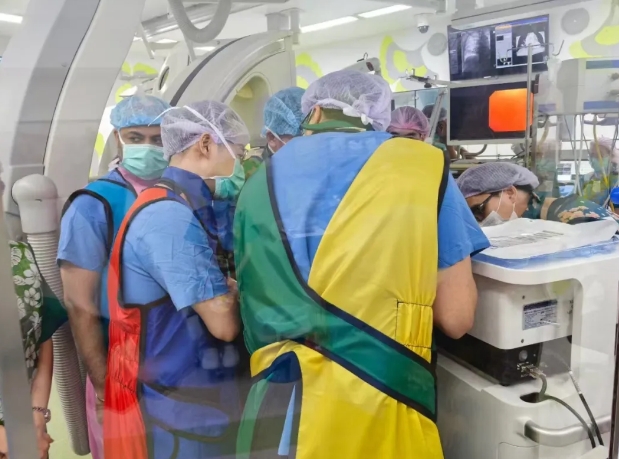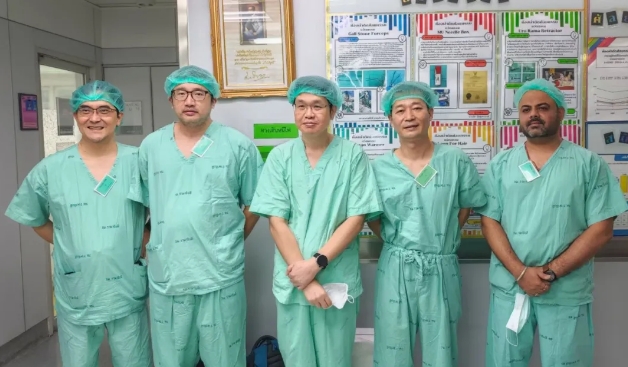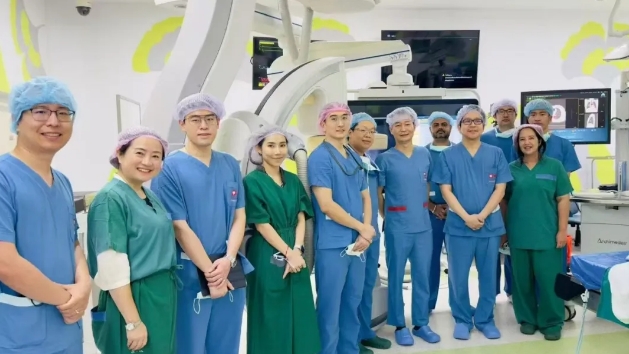Recently, Vice President Ouyang Haifeng of the Chest Hospital of Xi'an International Medical Center Hospital was invited by the Thai Chest Association and the Thai Red Cross to visit King Chulalongkorn Memorial Hospital and Ramathibodi Hospital in Thailand for guidance on minimally invasive respiratory disease intervention surgery.
King Chulalongkorn Memorial Hospital is one of the most famous teaching hospitals in Thailand, renowned for its high-quality medical facilities and environment. Ramatibodi Hospital is also a large tertiary teaching hospital affiliated with Mahidol University. During the three-day exchange, Professor Ouyang Haifeng systematically and comprehensively introduced the principles, operational procedures, and surgical techniques of lung nodule biopsy and ablation treatment under whole lung navigation bronchoscopy.

During the surgical demonstration guidance, Professor Ouyang Haifeng performed LungPro navigation bronchoscopy assisted CBCT assisted RF2 radiofrequency ablation treatment for two patients at King Chulalongkorn Memorial Hospital. During the operation, he demonstrated the details and essentials of the surgery to the doctors. At Ramatibodi Hospital, a biopsy diagnosis of BTPNA procedure was performed on one patient.
LungPro Navigation's unique BTPNA technology enables precise localization of isolated pulmonary nodules around the airway, establishing a direct pathway to the site of lesions outside the airway for diagnosis and subsequent treatment of the entire lung Professor Ouyang Haifeng introduced that this technology not only compensates for the low diagnostic rate of existing bronchoscopy technology due to the limitation of whether there is airway access to the lesion site and the inability to accurately locate the lesion site, but also compensates for the problem that CT guided transthoracic puncture (TTNA) cannot be applied to certain specific nodules, and avoids the high risk of pneumothorax and bleeding caused by transthoracic puncture to patients. It can be used for radiofrequency ablation or microwave therapy of benign and malignant lesions, and has advantages such as minimally invasive, safe, and synchronous diagnosis and treatment of both lungs.


This academic event is the first time that respiratory intervention doctors from mainland China have gone to Southeast Asia to provide surgical guidance and teaching. More than 10 respiratory doctors from Thai hospitals have observed the entire surgery. The successful completion of this event has further promoted our institute's international exchange and cooperation work.